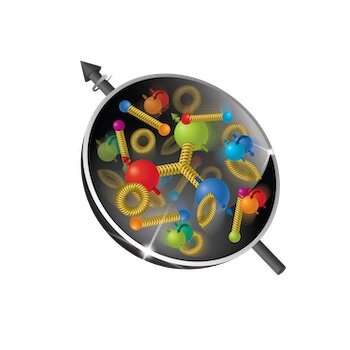Examining the origins of proton spin

Where does the proton get its spin? This question has puzzled physicists ever since experiments in the 1980s revealed that a proton's constituent quarks—the most fundamental building blocks of atomic nuclei—account for only about one-third of a proton's spin. Collisions of spin-polarized protons at the Relativistic Heavy Ion Collider (RHIC), a U.S. Department of Energy Office of Science user facility for nuclear physics research at DOE's Brookhaven National Laboratory, are helping to solve this mystery.
Nicole Lewis, a Brookhaven Lab physicist, will present the latest results from the RHIC spin program in an invited talk at the 2021 Fall Meeting of the APS Division of Nuclear Physics on October 12, 2021. The results will be published the same day in Physical Review Letters.
"RHIC is the first and only collider in the world that is able to run polarized proton beams," Lewis said. "This means that spin-measurements can be done at higher collision energies compared to earlier fixed target experiments such as those that revealed the initial spin mystery. In collisions where the proton's spin points in the direction of the beam (longitudinally polarized), we can study how much of the proton spin is due to the spins of its constituent quarks and gluons."
Lewis will present new measurements of quark and gluon contributions to proton spin based on data from RHIC's STAR and PHENIX detectors. Gluons are the gluelike force-carrier particles that effectively "glue" quarks together inside protons and other hadrons. RHIC is the first facility that allows detailed studies of gluons' spin contribution.
Lewis' talk will also include new results from transversely polarized proton collisions—where proton spin is aligned in an "upward" direction. These collisions allow scientists to probe the three-dimensional internal structure of the proton.
In addition, Lewis will discuss future spin measurement opportunities using a recent "forward upgrade" to STAR and the upcoming sPHENIX experiment—a major transformation of PHENIX—which is scheduled to begin collecting data in 2023.
More information: U. A. Acharya et al, Probing Gluon Spin-Momentum Correlations in Transversely Polarized Protons through Midrapidity Isolated Direct Photons in p↑+p Collisions at √s=200 GeV Physical Review Letters (2021). doi.org/10.1103/PhysRevLett.127.162001
Journal information: Physical Review Letters
Provided by American Physical Society




















